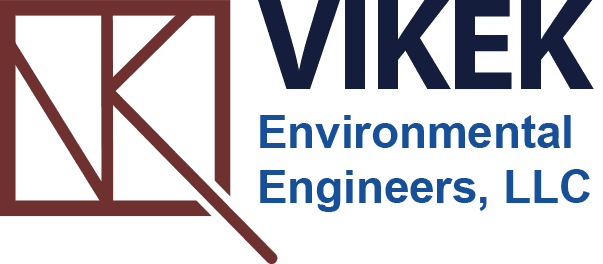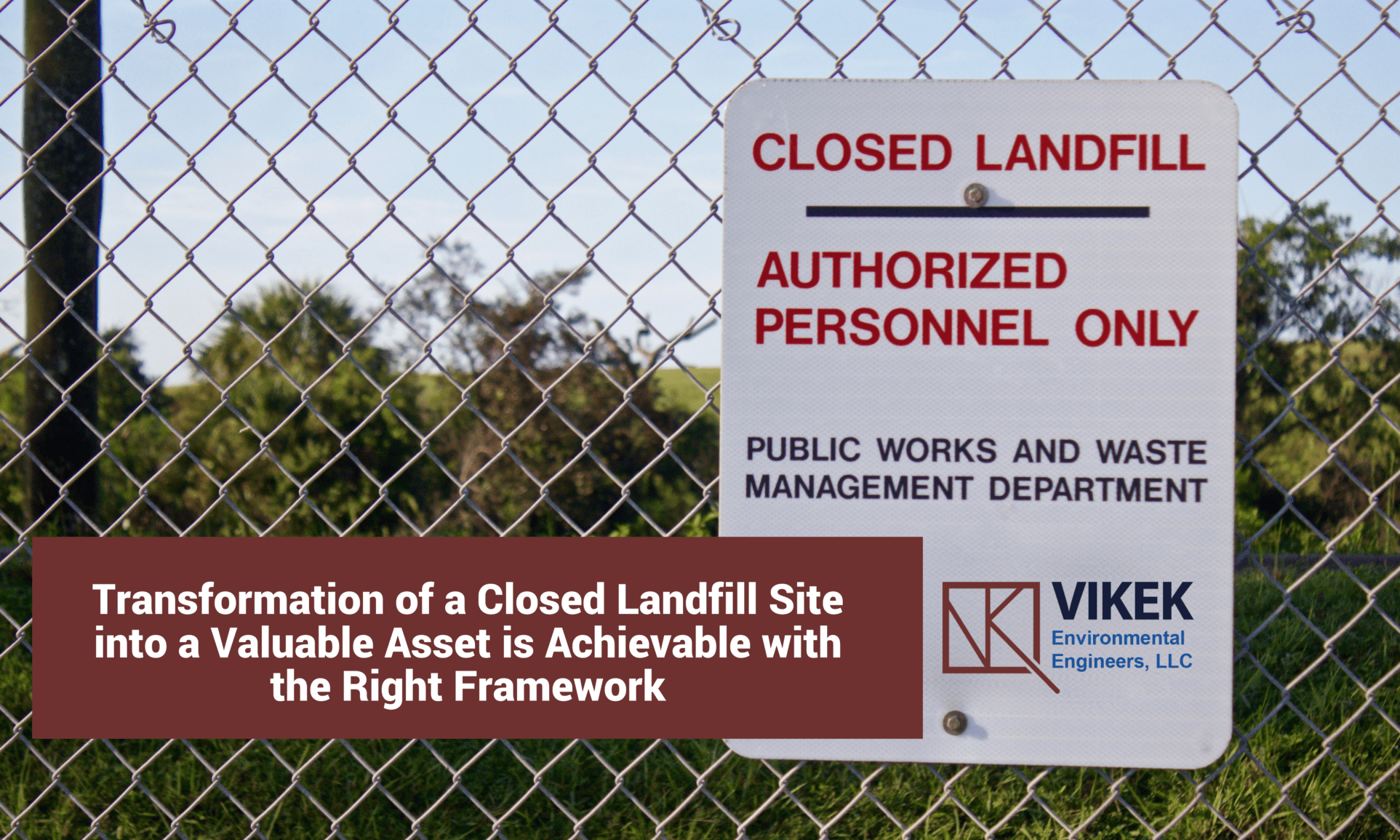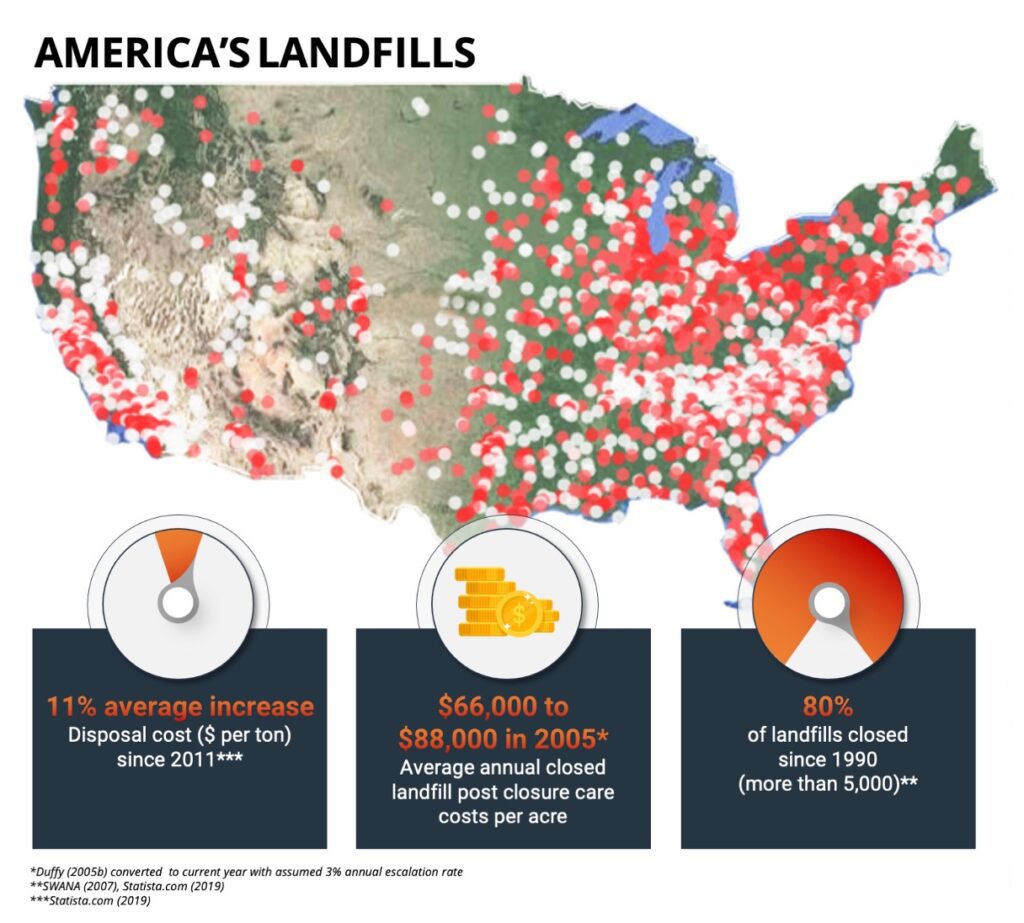
The Closed Landfill Value Realization Challenge
Despite over 30 years of effort, we have not adequately solved the closed landfill (CLF) value realization challenges. Since the late 1980s, over 5,000 solid waste landfills have closed and most of these are now subject to perpetual post-closure care, according to data published by the Solid Waste Association of North America (SWANA) and Statista.com (Figure 1). As we know, Landfill owners must be able to sustain the considerable expenses of maintaining a closed landfill for decades after the end of income-producing disposal operations. Many of these costs for environmental monitoring and risk mitigation are mandated by numerous federal, state, and local solid waste laws and regulations. To help offset this long-term burden there is an increasingly strong interest in how a closed landfill might be able to produce income. One of the capabilities of our firm is to help the owners of such assets evaluate alternatives for revenue generation and to help develop and execute best-fit alternatives plan that can survive a rigorous benefit-cost evaluation.
Achieving approval from regulatory agencies and host communities for the economically viable use of CLFs can be a complex undertaking. For most owners, it only just begins with an endless process of monitoring, data analysis, and performance reporting related to environmental, health, safety, and community issues.
The Difficulty with Current Approaches
There are several existing approaches for evaluating the feasibility of landfill post-closure care (PCC) termination and subsequent revenue generation alternatives, but most are narrowly focused on how to demonstrate whether a closed landfill has achieved functional stability. In this context, the first question is when can a landfill’s mandatory post-closure care be completely terminated.? Although current approaches can support structured closed landfill assessments, and owners have succeeded in converting some sites to recreational areas, natural habitats, and energy recovery parks, no existing approach has yet been endorsed by the United States Environmental Protection Agency (USEPA) or resulted in a noticeable increase in closed landfill redevelopment – Why?
One reason might be that the current approaches are quite narrowly technical in nature, and often miss some broader management challenges that are involved. A basic cause of these limitations might be that most landfill owners and their stakeholders still consider closed landfills as environmental liabilities. A broader approach focused on delivering ultimate value from closed landfills, requires effectively managing three competing forces: (1) achieving regulatory compliance, (2) sustaining compliance considering often changing long-term circumstances while redeveloping the landfill, and (3) realizing the optimal value from the redevelopment effort. For most owners, achieving sustainable environmental compliance as a way of delivering stakeholder value and hoping to eventually achieve PCC, has become the dominant strategy. However, this is a narrow and limiting liability-centric strategy. The problem with this approach is that achieving PCC termination is difficult and rarely happens because this strategy relies on the natural degradation of contaminants over time, it is rarely linked to an end-use objective, and it does not necessarily lead to approval to redevelop the landfill site because there are other obstacles involved, including host community support, and financial viability to be overcome.
A Cost-Effective Approach:
Our Closed Landfill End-Use Decision-Making Framework (CLEF™) is shown in the form of a dynamic “decision house” (Figure 2) that is continuously evolving against a changing set of conditions. Application of the framework can assist landfill owners to determine best end use options, develop and implement optimal strategies, and plans that might be required to ACHIEVE CERTAIN DEFINED ENDUSE results.
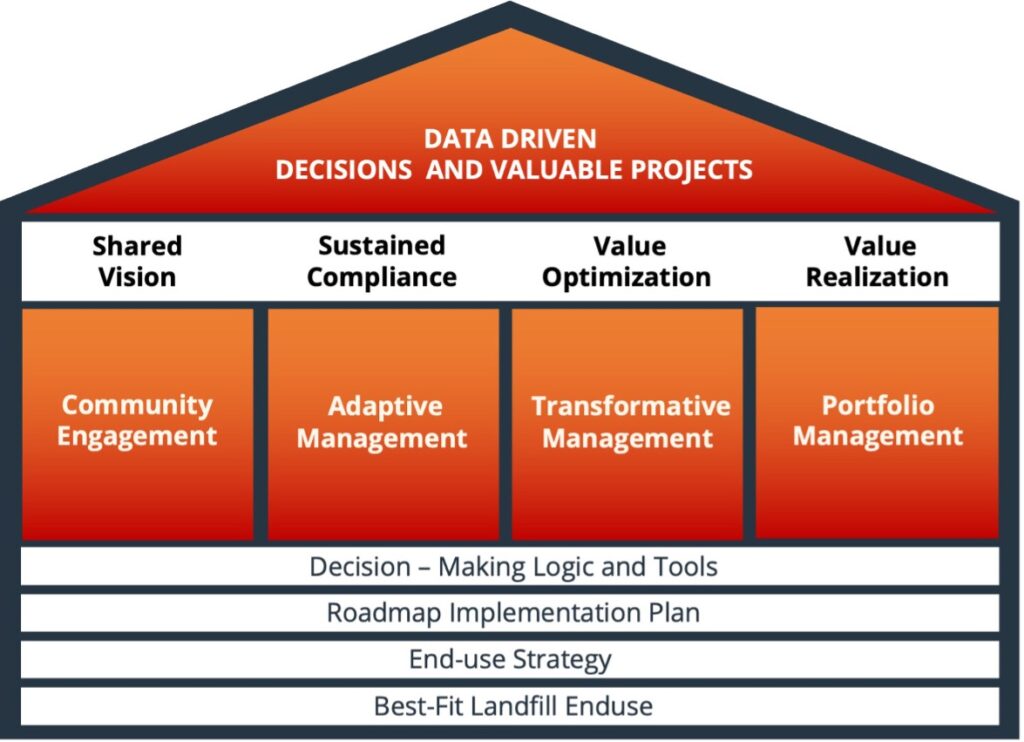
The Vikek Framework is based on Capital Asset Management Principles and currently closed landfill management practices. We help landfill owners define the Optimal Economic Value of their closed landfill(s) and how to best deliver and improve on that value. Our approach will enable owners to answer the following questions:
- How to define viable END USES?
- How to define the OPTIMAL VALUE of a closed Landfill?
- How to balance the tradeoffs between RISK-REDUCTION actions and the acceptance of their implications?
- How to PRESENT closed landfill ASSESSMENT AND ENDUSE information to key stakeholders to facility achievement of end-use objectives?
- How end-use DECISIONS should be made, by Whom, and When?
- What STANDARDIZED PROCESSES and tools to use to achieve closed landfill end-use objectives?
It is a Process Framework designed to be flexibly applied to a wide range of different landfill situations, and it is based on three main components:
The Foundation – Includes four key components: (1) best-fit landfill end use(s, (2) end-use strategies, (3) implementation plan, and (4) decision-making tools (performance indicators, templates, models, and techniques) to execute the strategy.
The earlier that the desired end uses are identified, the more opportunities will be available to strike the necessary balance between site utilization and meeting all requirements.
Four Pillars – Interconnected and integrated implementation processes necessary to manage landfill redevelopment risks (i.e., environmental, regulatory, host community, financial), execute the strategy and transform the landfill into a high-value asset.
Roof – The outcomes achieved from the successful execution of the roadmap processes and the decisions made.
CLEF™ application includes the utilization of current environmental, socioeconomic, regulatory and political information to define a landfill’s viable end-use options based on the model shown in Figure 3.
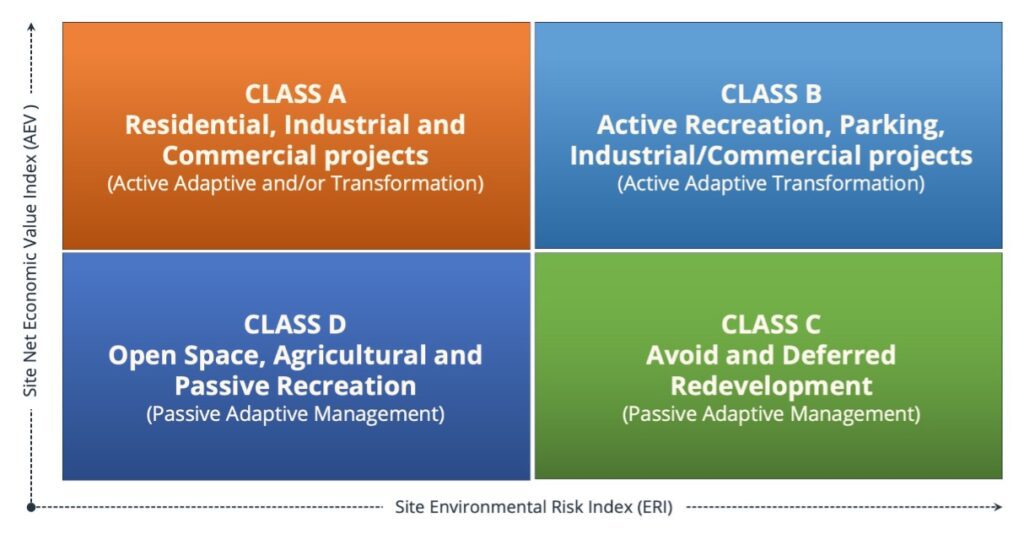
Defined end-use options provide the foundation for the early alignment of strategy, performance indicators, investigations, and effective decision-making using our framework.

We adapt the framework to each specific closed landfill post-closure management and redevelopment engagement and work with the client to develop and implement all related work elements.
How can our Closed Landfill Decision-Making Framework Help You?
The Closed Landfill Decision-Making Framework provides a standardized but flexible guide that can help landfill owners and operators:
- best resolve all the material constraints.
- achieve timely and rapid assessment of closed landfill value and risks.
- minimize cost by determining and aligning “best-fit closed landfill end-use options to the appropriate strategy, performance metrics and investigations.
- achieve a better understanding of both the current value of a closed landfill and the future Return on Investment available from realistic redevelopment decisions.
- make highly informed decisions that consider current and evolving regulations, investment alternatives and host community needs.
Why Choose Vikek Environmental Engineers (Vikek) to Help?
Vikek Environmental Engineers, LCC specializes in the cradle-to-grave planning, engineering, and management of solid waste facilities.
Vikek’s core personnel have over 100 years of combined experience in landfill development planning, design, construction, operations and post-closure management to help you develop a strategy and execution roadmap that fits your specific circumstances. Our professionals have provided landfill consulting services at over 100 landfills across the USA.
Vikek Personnel are experts on the present status of landfill regulatory requirements that could impact both tactical and strategic choices confronting decision-makers in this field.
Vikek’s benefit-cost approach, based on our comprehensive understanding of the regulatory, stakeholder, public relations and investment trade-offs regarding virtually all aspects of solid waste management, enables us to help owners optimize post-closure decisions.
For more information call Vikek Environmental Engineering, LLC, for an initial consultation: (206) 629-5935
